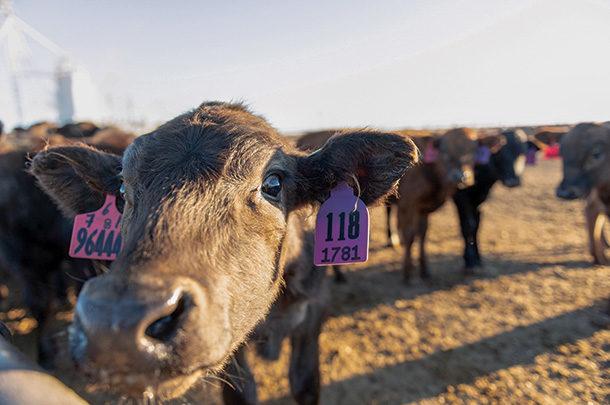If your cattle could talk – or sing – “Shoo fly, don’t bother me” would likely be a common mantra heard throughout the summer season as they annoyingly swat their tails across their backs. But flies are more than a mere nuisance. The reduced gains and related performance losses face flies and horn flies cause to cattle on pasture add up to an impact of over $2 billion annually.
In fact, flies are actually the biggest cost to the industry – even larger than respiratory disease. This cost to the industry is mostly due to loss of gains on pastured cattle, where flies can be challenging to control because fly eggs are continually being laid and hatched in cattle manure.
On average, horn flies, which sit on the body of the animal and suck blood, can reduce gains on a calf at its mother’s side or a stocker animal on grass by 0.1 to 0.25 pound per day. This is because when cattle are irritated by flies, they are often grazing less and not gaining weight. And reducing gains by 12 to 15 pounds per animal adds up to a lot of money lost, especially when you multiply that by the number of animals in the group.
Cows can also have reduced gains from blood-sucking horn flies, resulting in lower body condition, reduced milk production and decreased reproductive performance or breed back.
Additionally, even though face flies don’t suck blood, they damage cattle performance by causing pinkeye. Face flies feed on the mucosa around the animal’s nose and eyes – and in doing so, if the eye becomes scratched or irritated, face flies transmit the bacteria pathogens that result in pinkeye. As animals become affected, their weight gain and performance can decrease.
Because of these costly impacts, I suggest producers think of fly control not as a battle but as a war. And I tell producers to start fly control early and end late.
The economic threshold is to strive for fewer than 200 flies per animal because it does not take a lot of flies to cause an economic impact. I suggest producers use their hand as a guide to estimate how many flies are on an animal. The size of a hand is about equivalent to 100 flies.
It is impossible to completely eliminate horn flies and face flies, but you want to reduce their numbers so you can minimize their impact to cattle performance.
Control options
Fly tags and chemical control – via pour-ons, cattle rubs and sprays – are common fly control methods with merit. But they also have some drawbacks. Fly tags can be expensive and labor-intensive to run cattle through the chute and administer and later remove. And because there are only three classes of approved active ingredients among chemical fly control products, resistance to these products is a growing concern.
Additionally, with regard to face flies, dewormers don’t affect the face, so they are not effectively controlling face flies. And fly tags don’t necessarily kill face flies; they just ward them off.
Thus, I encourage producers to consider utilizing feed-through fly control products, which are additives that contain an insect growth regulator (IGR). These products can effectively be fed to cattle on grass with a free-choice mineral or feed supplement. Feed-throughs control horn flies and face flies in the cattle dung where flies are laying their eggs. These products kill the fly larvae or prevent the larvae from maturing, depending on the mode of action.
Because feed-through fly control products use a different mode of action (diflubenzuron) than fly tag and other chemical fly control products, another benefit is: Feed-throughs have no known resistance.
In total, using a combination of fly control methods can help provide the most effective results. Additionally, for fly control to be effective it needs to be a season-long effort.
Producers should start offering cattle mineral with feed-through fly control products about 30 days before expected fly population build-up. This typically coincides with the warm-up of summer. For south Texas and Florida, fly control may need to begin by mid- to late March; across the middle tier of the country, such as Oklahoma and Kansas, fly control should be initiated in mid-April; and in Northern states by mid-May.
Then, fly control should continue through the summer and into fall. For fly control feed-through products to be most effective, cattle need to go to mineral every day. To increase mineral consumption, feeding salt with the mineral can increase intake.
And once the summer grazing season winds down, I encourage producers to remain persistent with their fly control feed-through efforts. You need to “stay late” to decrease the fly numbers for next year; otherwise, the fly eggs can lay dormant in the manure.
In short, fly control is about more than just eliminating a nuisance. With flies being one of the biggest costs to the industry, control is key to avoiding loss in gains, preventing pinkeye and ultimately increasing profits.








